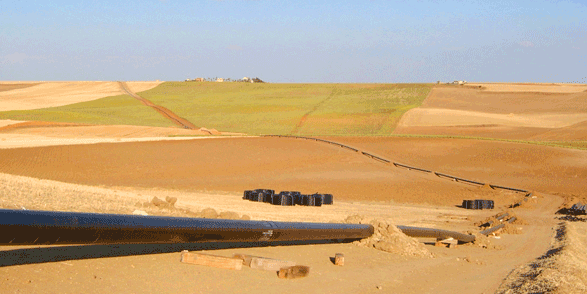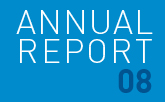The worldwide gas industry
>
Improvements in infrastructure
>
Africa and the Middle East
Africa and the Middle East
Increased production in countries that are already producing gas and the involvement of others over the medium term (Iraq and Egypt are potential suppliers) are issues that have become the subject of some attention. However, this process will probably require more extensive information on the resources available and further definition of the new export channels in the Baltic area. For example, China has begun building a new gas pipeline to carry gas (30 bcm/year) from Turkmenistan to the Chinese province of Xingjian, in the northwest of the country. The extent to which this could affect Turkmenistan’s role in the Nabucco gas pipeline or other projects planned in the region is an issue that needs to be studied.
Establishment of the Gas Exporting Countries Forum..
The approval of its statute at the end of 2008 represented a qualitative leap forward in the status of this organisation, which first began as a forum for debate with no decision-making powers. The events of the coming years will reveal whether it will become a de facto organisation in the style of OPEC, if this is indeed the intention of its members.
Iran has around 30,000 bcm of proven natural gas reserves, the second most important stock in the world. It is known, however, that the speed at which the country’s gas potential is being developed in order to allow it to bring a greater amount of this resource onto the international market has been slow, due in great part to disagreements on the international political stage. Despite this, Iran signed agreements in 2008 to export gas to a number of countries, such as the agreement with Oman that covers the export of gas from the Kish field. The country is also maintaining its intention to export gas to Turkey, from where it could be re-exported to western Europe.
It is probable that by the time this report is published the first liquefied natural gas produced in Yemen will have been used in Korea. Construction of the first liquefaction train at the Yemen LNG plant in the Arabian Sea is now complete, along with the 320 km connection with the gas fields.
Establishment of the Gas Exporting Countries Forum..
The approval of its statute at the end of 2008 represented a qualitative leap forward in the status of this organisation, which first began as a forum for debate with no decision-making powers. The events of the coming years will reveal whether it will become a de facto organisation in the style of OPEC, if this is indeed the intention of its members.
Egypt may be coming close to making a decision regarding the second train at the LNG plant in Damietta, in which the Spanish company Unión Fenosa Gas has an interest.
Significant developments are unfolding in the domestic gas sector in Egypt, which is the end-user of increasing amounts of the country’s own gas output. The policy of continuing to search for new gas resources has received the support of all the parties involved. The aim announced by those in charge is to export no more than a third of the country’s production and exploit its reserves, while at the same time maintaining a good rate of extraction.Iran has around 30,000 bcm of proven natural gas reserves, the second most important stock in the world. It is known, however, that the speed at which the country’s gas potential is being developed in order to allow it to bring a greater amount of this resource onto the international market has been slow, due in great part to disagreements on the international political stage. Despite this, Iran signed agreements in 2008 to export gas to a number of countries, such as the agreement with Oman that covers the export of gas from the Kish field. The country is also maintaining its intention to export gas to Turkey, from where it could be re-exported to western Europe.
Production capacity in Qatar had reached 38 million tonnes of LNG per year by the end of 2008, with 10 liquefaction trains in operation. This capacity will increase to 77.5 million tonnes a year by 2012.
By then, the two companies that produce LNG in the country (Qatargas and RasGas) will each have a greater LNG production capacity than the whole of Indonesia. It is probable that by the time this report is published the first liquefied natural gas produced in Yemen will have been used in Korea. Construction of the first liquefaction train at the Yemen LNG plant in the Arabian Sea is now complete, along with the 320 km connection with the gas fields.

Endesa Gas

Annual Report 2.008: Sedigas - The Spanish Gas Association

